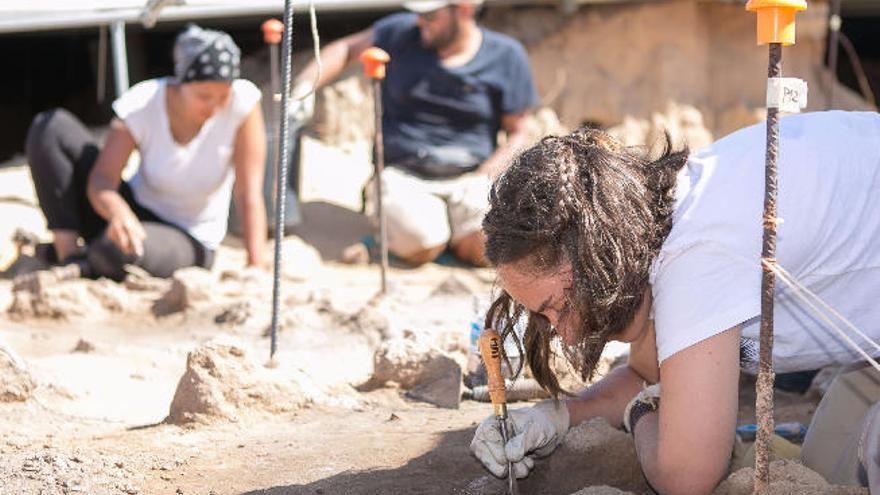
researchers of the Catalan Institute of Human Paleoecology and Social Evolution (IPHES), of the universities of La Laguna and Zaragoza and the Archaeological Museum of Tenerife have described for the first time the structure of the eggs of two birds that nested in the Canary Islands about 2,100 years ago.
As reported this Tuesday by the IPHES in a statement, it is the first time that a biomineral analysis of two complete fossil eggs of a shearwater (Procellariidae family) has been achieved. recovered in one of the Roman sites of the Lobos Island (Canary Islands), with a chronology from the middle of the 1st century AD. until the middle of the first century AD.
The research, published by Diversity magazinehas been led by the IPHES researcher Carmen Nunez-Lahuertawho has explained that it is not usual to find fossil remains of eggs, but in the Canary Islands fossil remains are relatively common and have been the subject of research since the 1970s.
Núnez-Lahuerta has specified that the importance of knowing the structure of these eggs lies in the fact that, “although a priori all bird eggs are very similar, they have a highly variable complex structure.”
“The egg shell is made up of three layers, but the relative thickness can be different, as is the presence and distribution of other structures such as cuticles or vesicles. This set of variations are typical of each species, so its study enables the laying bird to be identified”, detailed the researcher.
This is how the investigation was done
The researchers have used various microscopy techniques after preparing the samples in thin sections to be observed in petrographic microscopes, and in samples in test tubes, to observe them in an electronic microscope.
Thus they have been able to see the structure of the three layers typical of bird eggs, and the proportions between the thickness of these layers, as well as the distribution of structures called vesicles throughout the layers, have made it possible to attribute the eggs to shearwaters, long-winged seabirds typical of temperate and cold waters.
Thanks to the fact that the eggs were recovered practically complete, their size and sphericity have also been measured and have allowed the eggs to be assigned to the taxa Calonectrios/Puffinus and Puffinus, with which the researchers have described two species of shearwater endemic to the islands that currently extinct: Puffinus holeae and Puffinus olsone.
For this reason, the researchers’ next line of work will be to characterize the biomineral structure of the eggs of extinct Canary Shearwaters to increase knowledge about the fossil record and learn more about their behavior and extinction.
Isla de Lobos is the only Roman site in the Canary Islands and is located on a small island of about 500 hectares, of volcanic origin, located in the Strait of La Bocaina, between the islands of Fuerteventura and Lanzarote.
According to the professor of Archeology at the University of La LagunaCarmina del Arco, “Lobos is a privilege and, at the same time, an exotic site for Canarian cultures”.
“It is only Roman, without material related to Canarian indigenous cultures, and it explains the economic interests that existed to exploit the resources of the Canary Islands since very early times. ancient“added the professor.
Archaeological excavation work on this island has made it possible to identify the settlement as a purple workshop that would have operated from the middle of the 1st century AD. in the middle of the first century AD.
The set of evidence located in Lobos, such as Purpura haemastoma shell heaps, salted, vinary and oleic amphoras, common pottery or fishing instruments, reflects the frequentation of the Canary Islands by Roman populations, probably originating in Gades, with the aim of exploit natural resources, in this case the purple dye.
















